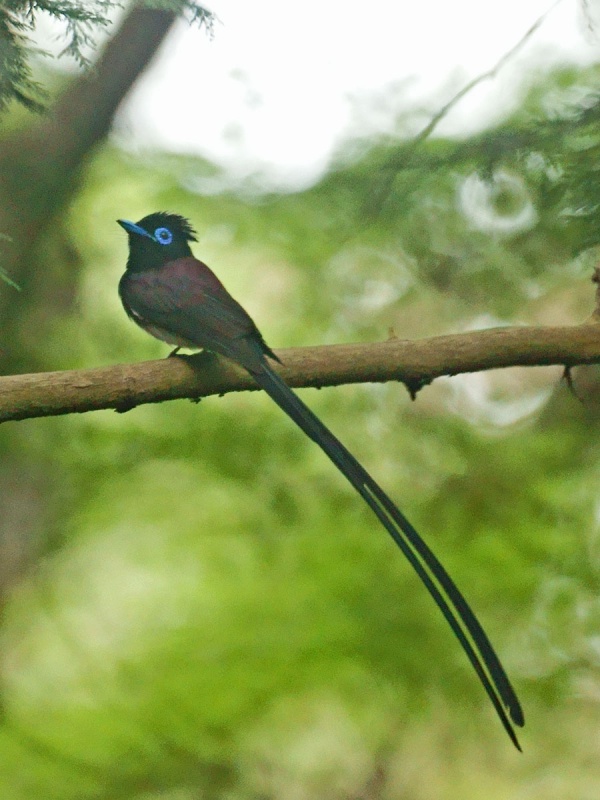Facts About Japanese paradise flycatcher
The Japanese paradise flycatcher, also known as the black paradise flycatcher, is a striking medium-sized bird found in southeastern Asia. With its glossy black, chestnut, and white plumage, it’s a true eye-catcher. The males are particularly distinctive, boasting elongated tails that differentiate them from the females.
This bird is a migratory species. During the breeding season, they can be observed in Japan, South Korea, Taiwan, and the northernmost parts of the Philippines. When the breeding season concludes, they migrate to other regions of Asia seeking warmer climates.
Originally, the Japanese paradise flycatcher was classified under the Muscicapidae family, but scientists have since reclassified it within the Dicruridae family, which includes the drongos. There are three recognized subspecies of this bird. Males and females exhibit sexual dimorphism, with males being more vividly colored and possessing longer tails.
One of the bird's most enchanting features is its song, which sounds like “tsuki-hi-hoshi, hoi-hoi-hoi.” This translates to "Moon-Sun-Stars" and is reflected in its Japanese name, サンコウチョウ (sankōchō).
These birds prefer mature forests for breeding, commonly found in Japan, South Korea, Taiwan, and the Philippines. Outside the breeding season, they venture into various regions across Asia.
Regrettably, the Japanese paradise flycatcher faces significant challenges, particularly a decline in its breeding population due to the loss and degradation of forests within its winter range. The Gotjawal Forest in South Korea is a crucial breeding ground for these birds, underscoring the importance of preserving such habitats.

 North Korea
North Korea